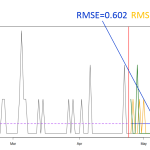Here is another fascinating aspect of the seasonal profile in your data: it can evolve over time due to changing consumer preferences. How so? Let me explain. I’ve worked with a couple of companies where there were some examples of data with drastically changing seasonal patterns over just a few years. For example, Before Covid […]
Evolving seasonality













